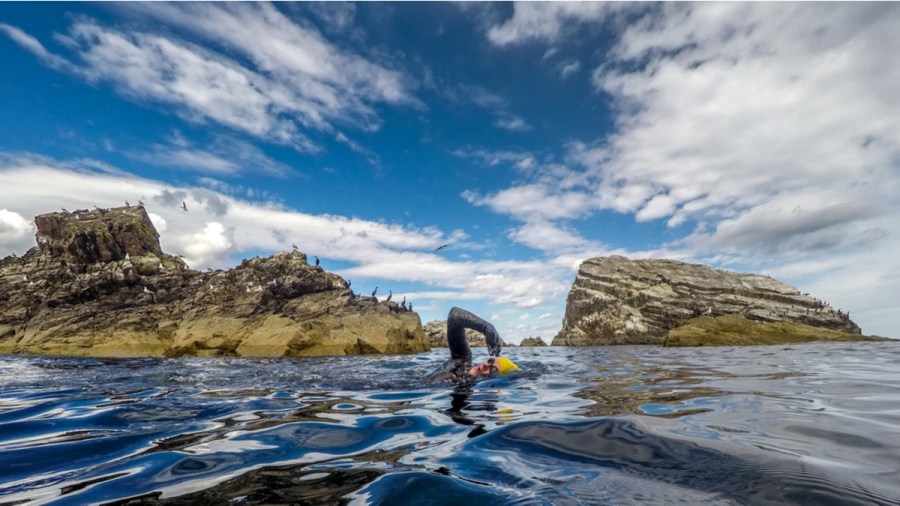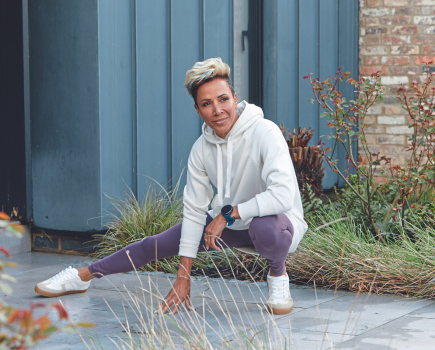Open water swimming has surged in popularity during the pandemic.. and it’s women leading the way.
Whether you’re swimming front crawl, breaststroke, or doggy paddle, the physical benefits of swimming are long documented as a low impact way to tone muscle and build cardiovascular strength. But over the course of lockdown, thousands of people discovered what many in the wild swimming community have loved for a long time. Come rain or shine, summer or winter, wild swimming can have an incredible impact on your mental health and wellbeing.
Women are more likely to swim outdoors more often, and in any weather, than men,
according to a recent report, with 63 per cent of female swimmers swimming outside once per week or more in winter, compared to 44 per cent of men.
And female participation in outdoor swimming grew 65 per cent in 2020. While groups abstained from meeting for much of lockdown, as restrictions ease, swimming communities are thriving. It’s this social side of wild swimming that many are finding as valuable as the swim itself.
Wild swimming is so social
‘Along the Cornish coast every day, I see women swimming and laughing together, sharing an experience that provides a collective sense of accomplishment,’ says Charlotte Lodey, 35, a qualified life and wellness coach with the Vitamin Sea Collective (vitaminseacollective.com) and a registered Blue Health Coach.
‘So many women reach a point where they’ve given so much of themselves to their children, partner or career and they feel something is missing or lost. But when wild swimming with other women, who are all stepping out of their comfort zones, they’re doing something nutritious for themselves and so they have so much more to give others.’
Only one per cent of people who try outdoor swimming like it less than they thought they would. Charlotte believes this is because your brain tells you you’re not going to like it, but you quickly discover that there’s so much to love.
Wild swimming is empowering
‘Whether you dip for a minute or swim for an hour, you’re so busy just being in the water, it’s a powerful and transformative experience,’ she says. ‘It leaves you feeling so empowered, you start to wonder what else you might be capable of doing in your life.’
For those who try it, love it and keep returning to the water, wild swimming becomes an integral part of their identity, with 64 per cent of wild swimmers saying outdoor swimming was most important for their sense of self.
‘We’ve known for a long time that yoga, meditation, walking, and even a hot bath are good for self-care, but wild swimming ticks more boxes,’ says Charlotte.
Wild swimming has physical benefits
‘There are lots of physical benefits, from speeding up your metabolism to slowing down heart rate, improving circulation, and boosting immunity, but I think one of the most brilliant benefits is the way it helps you cope with stress and anxiety.
‘By exposing yourself to an environment you are usually so shielded from in air-conditioned or heated homes and offices, you take ownership of your body. Entering cold water does trigger a stress response, but as you learn to manage and control your breathing in the water, you naturally become more calm and conscious of your breathing when you’re in other stressful situations, too.’
Stay safe while swimming outdoors
For those keen to discover wild swimming, staying safe is crucial. Be mindful of tides and currents in rivers and the sea, and be respectful of the water.
‘Never swim alone and tell someone where you’re swimming and when you expect to return,’ Charlotte urges.
‘Never feel pressured to swim if you change your mind. Wild swimming is all about being kind to yourself and the environment, so go gently. I hope those who are new to wild swimming see it as a sacred part of their routine now. It’s my life’s work to encourage people to realise they are capable of feeling great every day. Wild swimming gives that gift.’
Your guide to wild swimming
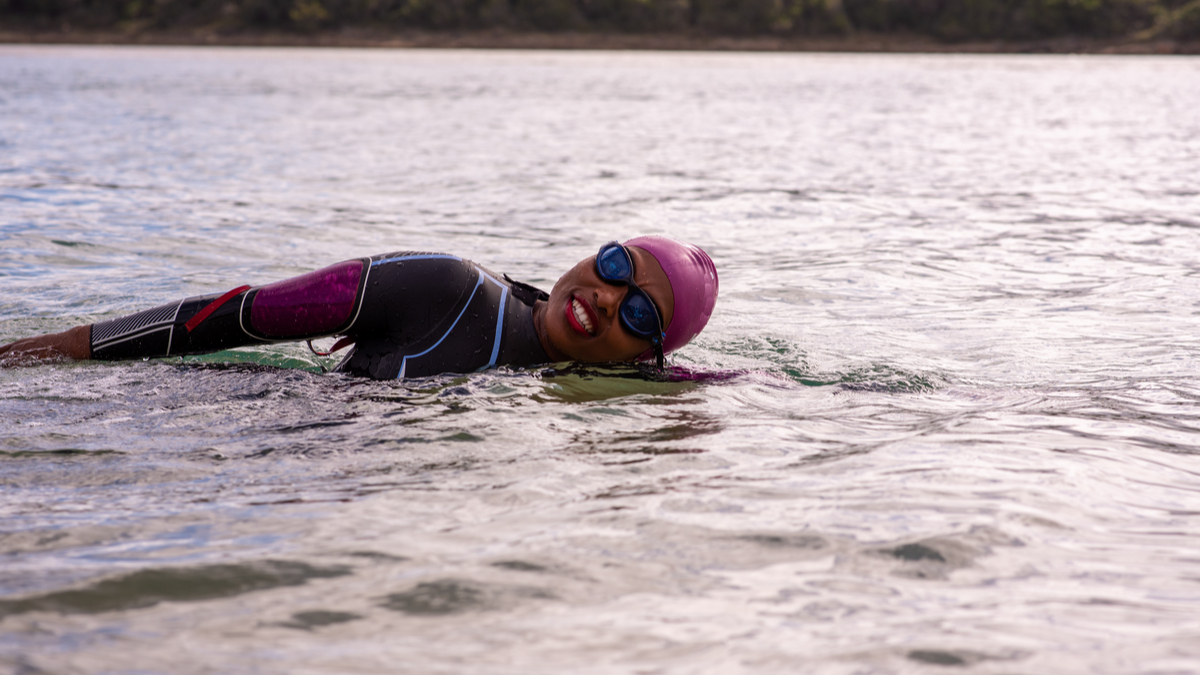
Before swimming
Suit up. Swimming wet suits are made of neoprene and have a plastic rubber coating on them partly for insulation. a surfing wetsuit is unsuitable as it’s designed for someone to be on not in the water. That wetsuit will retain water, so it gets quite dense. swim ones make you more buoyant.
Don’t forget your cap. You lose more heat through your head than anywhere else on your body. even if swimming with your head out of the water, you still need a swimming hat, and if it’s cold, a woolly hat on top! The hat should also be brightly coloured so that you can be seen.
Wear a wetsuit, socks, and gloves. You need to protect your hands – and don’t forget shoes that you can walk in afterwards, such as slides or crocs.
Get a tow float. You should not swim in a lake without a tow float. If you are swimming in a river or the sea, I recommend one for visibility, though you don’t have to. But if you’re out in the sea, anyone on the beach will see the tow float before they spot you.
During a swim
Get into the water slowly. You should never rush or run in. do box breathing – in for four counts, out for four counts. steady breathing is key.
Get a little water inside the suit. Open the cuff, or splash some water into the neck of your suit. Having water inside creates a barrier of insulation – the water warms up and keeps you warmer.
Acclimatise for one to three minutes. If you were to experience cold water shock, it would happen in the first few minutes, so doing the above minimises your chances of it happening. Then, start jogging on the spot or doing some breaststroke.
After swimming
Bring clothes that are easy to put on. Zips and buttons are a nightmare if you have cold, shaky hands! don’t forget socks and never wear flip-flops as your feet will stay cold. Take a hat, gloves and a scarf – it’s better to have too many clothes than not enough.
Leave your hat until last. Get all other layers off first and only take off your swim hat at the last moment to replace it with a dry one.
Don’t have a hot shower. If you have a hot shower too quickly after getting out, you could feel unwell. Instead, go for a walk or jog to generate body heat.
These women tried wild swimming and they love it
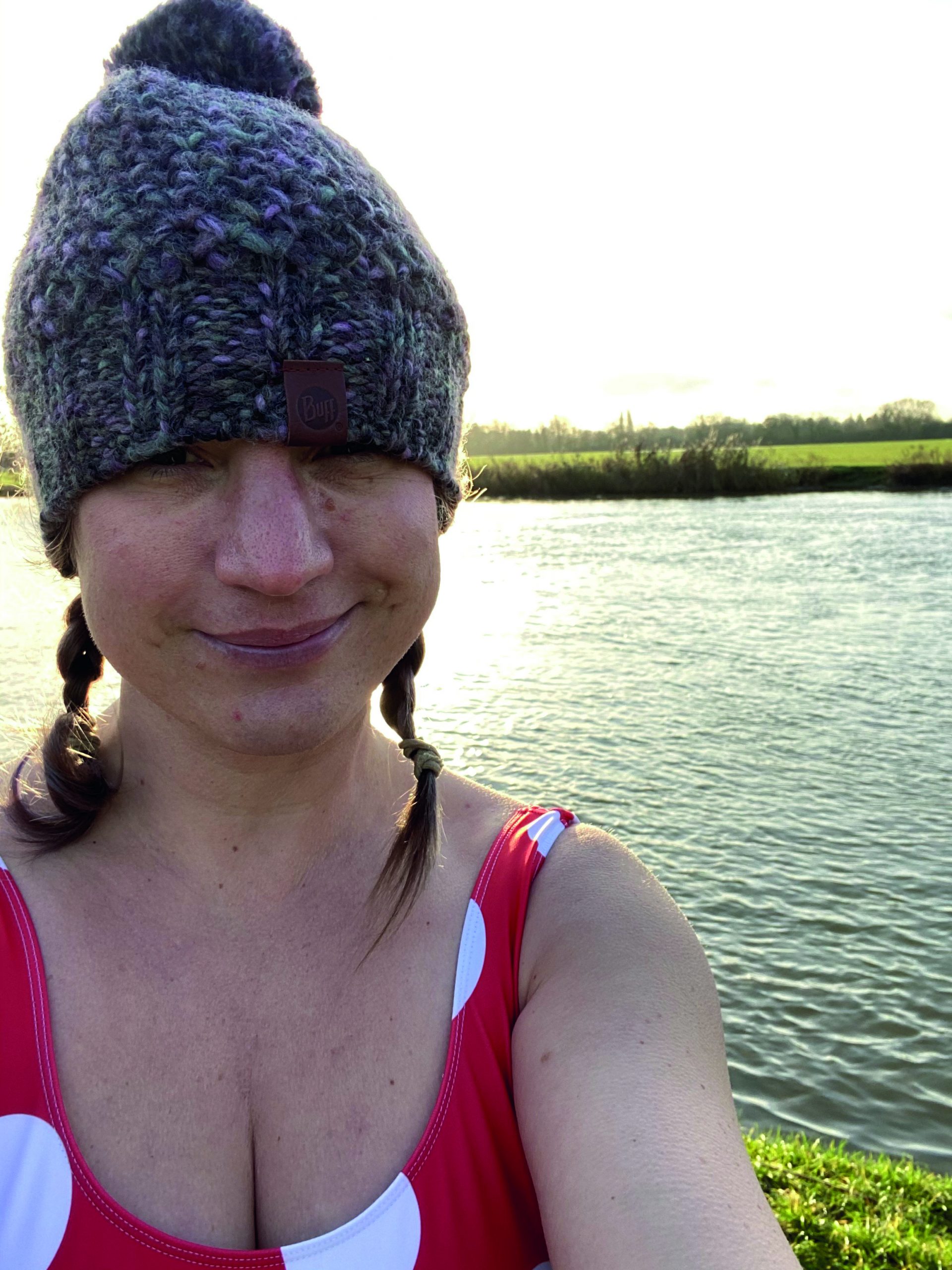
Jo Gifford, 44, from Cambridge.
‘I hated swimming and the cold. Now I’m a wild swimming addict.’
With the backdrop of all that was chaotic about 2020, my wonderful dad, Peter, passed away in May after a long battle with dementia and a short battle with Covid-19. Only able to say goodbye via FaceTime, I was knocked sideways by grief.
By June I was struggling with anxiety, panic attacks, and depression. I was exhausted, drinking too much and my doctor had prescribed diazepam. I could barely get through each day, but I started sitting beside the lakes of a nature reserve to meditate, think and cry.
To my surprise, I began to crave the water. one warm evening in July, I found a secluded spot and waded into the river, naked. At a time when freedom felt so compromised, I felt totally free. The water cleared my mind, washed away my grief, and left me feeling lighter and refreshed. But I did not think I would swim beyond summer, as I hated being cold.
When some local wild swimmers reached out to me on instagram and invited me to be winter swim buddies, I was inspired and intrigued to see if the magic still worked in the colder months.
The first time I swam in cold water, in October, I felt euphoric. I’ve lived with endometriosis, chronic fatigue, and fibromyalgia for years, but swimming offers instant pain relief. I now swim in the River Ouse with my wild swimming buddy, Elise, and we formed the community group Cambridgeshire & Peterborough Blue Tits.
Wild swimming is my soul food. It offers a sense of achievement, tests my mind and body, and connects me to like-minded humans and to nature. It’s given me confidence, courage, and resilience. if water has taught me anything, it’s how to go with the flow.
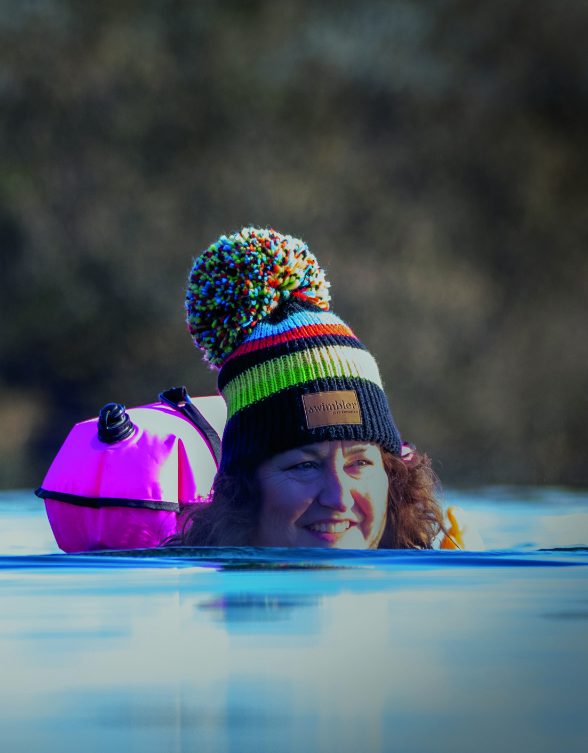
Picture credit: Mark Deith
Wendy-Anne Steer, 49, from Lincolnshire.
‘Wild swimming is great for wellbeing, but also camaraderie and cake!’
Six years ago, I took up stand-up paddleboarding, but soon realised I loved falling and jumping in the water just as much as being on the water. There weren’t many organised open water groups back then, but when we moved to Lincolnshire, I vowed to swim several times a week in the sea, lakes, and the River Nene.
I’d known about the cold-water athlete, ‘The iceman’ Wim Hof, for a few years, but in March 2019 I took the Wim Hof Fundamentals training course to give me the confidence to swim in cold temperatures. The course ensured I overcame any fear of the cold while remaining respectful of its force.
As a qualified meditation teacher and owner of The well-Being Alchemist (thewellbeingalchemist.co.uk), I depend on wild swimming for my wellbeing just as much as meditation. At one point in lockdown, I couldn’t swim for a month and I felt nowhere near as good in myself.
It connects my mind and body and is a totally immersive experience, which leaves me feeling a genuine high for the rest of my day.
Wild swimming is great for wellbeing, but it’s also about camaraderie and cake! There’s always cake and a hot drink after a dip and I love my swimming buddies and the sense of community built on the shared exhilaration of being in the water.
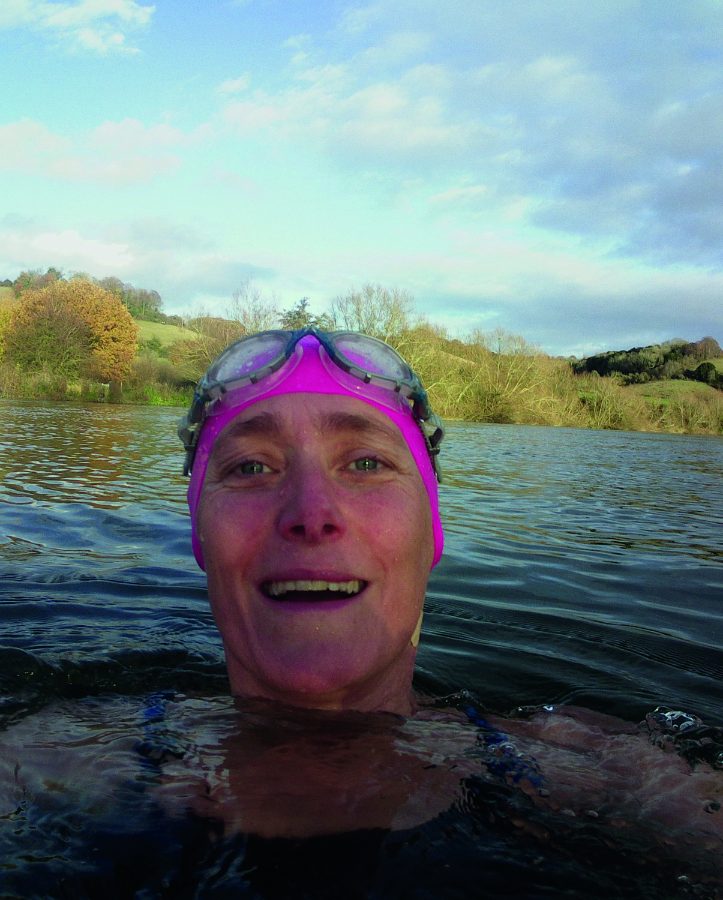
Angela Bryant, 48, from Oxfordshire.
‘Swimming is my constant companion.’
As a child, I swam competitively, which meant endless, boring laps in the pool and always smelling of chlorine. By my teenage years, I’d decided swimming wasn’t for me but in my 40s I had to force myself to go to the gym and yearned for a way to exercise that I loved.
I joined the Facebook group west Berkshire Open Water Swimmers but lurked on the group for a year without joining a swim. I was terrified I might be too slow or would get caught in the weeds. I worried about meeting new people who might all be brilliant swimmers and I wouldn’t be able to cope or would somehow get it wrong. In 2018, my husband and I took a belated gap year and, while we were in Mexico, I swam regularly. Returning home, I was determined to carry on.
In June 2019, I found the courage to try out open-water swimming and immediately loved it and the people I swam with. Wild swimming has become my constant companion, whether it’s a long summer swim or a cold winter dip. It’s the most intense mindfulness session, coupled with a massive hit of euphoria.
It leaves me feeling invincible, like anything I turn my mind to is possible because if I can get into cold water wearing just a swimming costume, I can do anything. So much so, six months after my first swim, I launched a business I’d been thinking about for two years, angel rated (angelrated.com). It’s a review site for online businesses and it was such a scary thing to do, but wild swimming undoubtedly gave me the confidence to believe I can do big, scary things – in and out of the water.
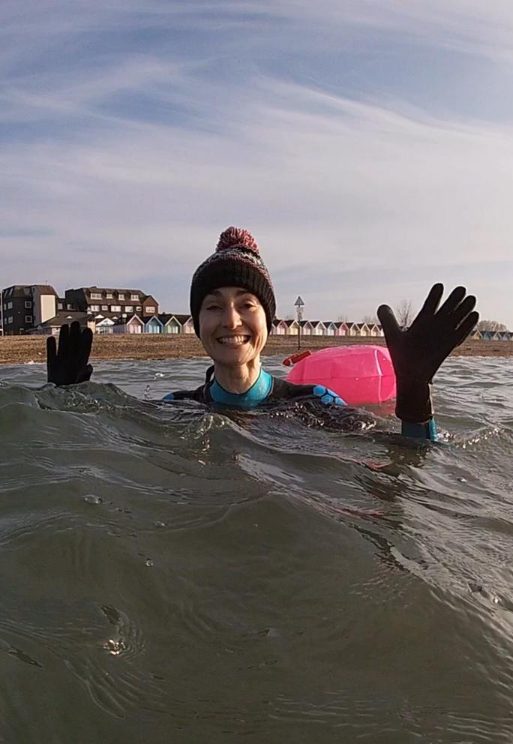
Top Santé editor Katy Sunnassee, 42
‘It was freezing but exhilarating!’
‘You’re mad!’ said my husband when I told him I was going to go swimming in the sea at 7.30am. And it did seem a little crazy, considering it was the middle of March! But I’d agreed to join open water swim coach Vicky Malmsjö down at the beach for my first open water ‘swim’ (honesty compels me to say that little actual swimming took place).
Donning a swimming wetsuit and with wetsuit socks and gloves, a swimming cap, and a woolly hat, I waded into the estuary.
It was OK until I was up to my waist when the water started to get in at the zip! Vicky reminded me to acclimatise by patting the water on my face and letting some of it down the top of the suit – this water acts as a thermal layer as the suit warms it up. I bobbed about and skipped along the bottom for a bit but didn’t manage many actual swimming strokes, largely because the gloves I’d bought were letting all the water in, turning my fingers into icicles!
But it was exhilarating just being in the water so early in the morning and having the sun streaming down on us.
Getting dressed was the worst part, as my fingers were so frozen it was difficult to peel off the wetsuit and get dressed all that quickly.
After the swim, to help warm up, Vicky and I went for a walk along the beach.
Just as we were leaving, some other swimmers turned up and it’s this social aspect that also makes me want to get into the local swimming scene, and so I’ve joined Vicky’s local Facebook swimming group.

